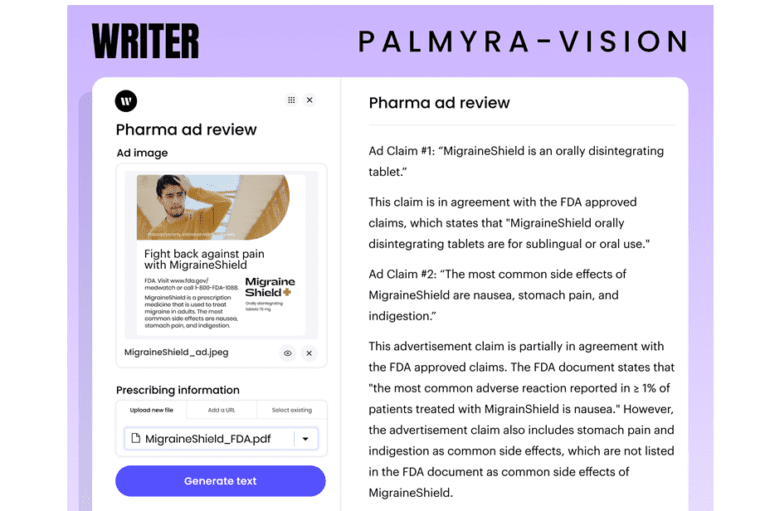- Writer, a San Francisco startup, introduces Palmyra-Vision, augmenting its Palmyra model for generating text from images like graphs and charts.
- May Habib, Writer’s CEO, emphasizes a strategic focus on multimodal content, prioritizing text output for diverse inputs.
- Palmyra-Vision utilizes multiple models to achieve high accuracy in interpreting images and generating corresponding text.
- Applications include dynamic text generation for e-commerce, automated insights extraction from visuals, and compliance checking for pharmaceutical ads.
- The product can transcribe handwritten notes into text, but domain-specific training is required for optimal accuracy.
- Human oversight is recommended to validate AI-generated outputs, despite advancements in automation.
Main AI News:
The burgeoning dominance of generative AI in the media often obscures practical business applications amidst the fervor. San Francisco-based startup, Writer, is steering through the hype by tailoring generative AI writing solutions for enterprise needs. Today, the company unveiled Palmyra-Vision, an enhancement to its Palmyra model enabling text generation from images, including graphs and charts.
According to May Habib, the co-founder and CEO, Writer strategically prioritizes multimodal content, emphasizing text output from various inputs. “Our focus is on multimodal input with text output, delivering insights through textual means,” Habib explained to TechCrunch.
Writer’s strategy pivots on analyzing images rather than producing them, at least for the present. While they reserve the possibility of generating charts and graphs from data in the future, their current release concentrates on extracting text from diverse images.
The methodology involves employing multiple models within Palmyra-Vision, each tasked with distinct roles in image interpretation and text generation, boasting an accuracy of four nines, as per Habib.
This innovation unlocks myriad applications, such as e-commerce platforms dynamically generating text for evolving product images, ensuring up-to-date descriptions without human intervention, and automatically deciphering insights from charts and graphs. Additionally, it facilitates compliance verification; pharmaceutical firms can utilize Palmyra-Vision to conduct FDA compliance checks on advertisements, aligning with regulatory standards outlined in associated documents.
Moreover, the product can transcribe and synopsize handwritten notes into text. However, Habib emphasizes the necessity of fine-tuning the model for specific domains like healthcare or insurance to ensure accuracy.
Despite its capabilities, Habib underscores the importance of human oversight in the workflow. Acknowledging the potential for errors or fabrications, she advocates for human validation alongside AI-generated outputs. While this recommendation is well-received by most customers, Habib envisions an automated workflow to integrate human review consistently, a goal the company is actively pursuing.
Having secured $126 million in funding thus far, Writer is in discussions with major cloud infrastructure platforms for potential partnerships to scale operations. Following a successful $100 million Series B round led by Iconiq last September, the company’s latest Palmyra release with image-to-text capabilities is now available.
Conclusion:
Writer’s unveiling of Palmyra-Vision marks a significant stride in AI-powered text generation from images, catering to diverse business needs such as e-commerce, compliance, and data analysis. This innovation underscores the growing potential of AI in enhancing workflow efficiency and decision-making across industries, with the caveat of maintaining human oversight for accuracy and reliability. As such, it presents a compelling opportunity for businesses to leverage advanced AI capabilities while ensuring data integrity and regulatory compliance.

